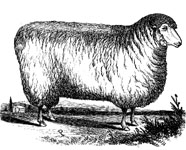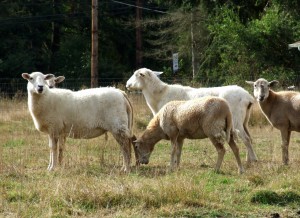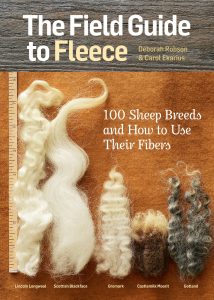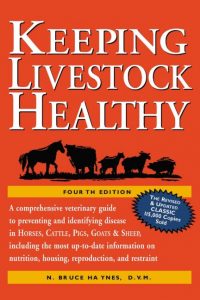
Breed Facts
Status:
Graduated 2013
Use:
Meat
Adult Weight:
120 – 250 lbs
Notes:
Hair sheep
KATAHDIN SHEEP
The Katahdin is a hair sheep developed at Piel Farm in Maine beginning in the 1950s. The goal was to produce a hardy meat sheep that did not require shearing. Virgin Islands hair sheep contributed the hair coat, as well as hardiness and prolificacy. The Suffolk and other wooled breeds were used to improve size and carcass quality. During the 1970s, the Wiltshire Horn, a hair sheep from England, was also incorporated to a limited degree in order to increase size and improve carcass quality. The resulting breed was named for Maine’s Mt. Katahdin.
Katahdin Sheep
Although it was developed in Maine, cold adaptation was not an intentional selection factor for this breed. This brings up a dilemma because the original hair sheep are naturally selected for hot, humid climates. While Katahdins do well in those climates, they can also tolerate cold climates, as do St. Croix and other hair sheep breeds once they have a chance to acclimate to it.
Katahdin sheep are medium in size, with ewes weighing 120 to 160 pounds and rams weighing 180 to 250 pounds. As hair sheep, Katahdins shed without being sheared. They vary somewhat in the type and amount of fiber in their coats, though it’s preferred that sheep be completely free of woolly fibers after shedding. The coat can be any color or pattern. Most of the sheep are polled, although horned animals sometimes occur in the breed.
The Katahdin is selected to be an efficient meat-producing animal adapted to a wide variety of environments. While the winter coat provides enough protection for them to thrive in cold climates, their short, hair coat allows them to tolerate the heat and humidity of warmer regions. Katahdins demonstrate greater parasite resistance than commercial wooled breeds, and research is underway to document other performance characteristics.
In 1986, Katahdin Hair Sheep International was formed to register sheep, record performance information, and promote the breed. These sheep are increasing in numbers in North America and have also been exported to Central and South America.
The breed is taking advantage of the fundamental shift in the American sheep industry caused by the decline of the wool market. This success story is an excellent illustration of the principle that breed resources are conserved so that they can be available when production goals and management systems change.
In 2011, the breed association saw more than 6,500 new registrations and Katahdins graduated from The Livestock Conservancy’s priority list in 2013.
Did you know:
The Livestock Conservancy is America’s leading organization working to save over 150 heritage breeds from extinction. We rely on the support of our members, grants, and donations from the public to raise the $700,000 a year needed to maintain our conservation work with rare breeds of farm animals. Click here to learn how you can help.
You may be interested in…

Breed Facts
Status:
Graduated 2013
Use:
Meat
Adult Weight:
120 – 250 lbs
Notes:
Hair sheep
You may be interested in…




